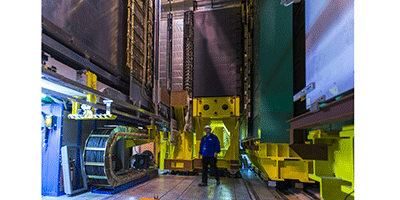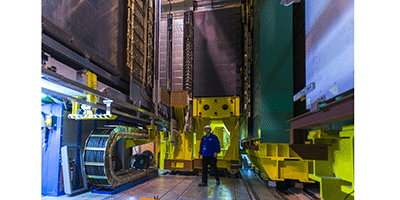Asymmetry in Strange-Beauty Mesons
In particle physics, a rare event is a thing of beauty—even if it’s expected. The standard model of particle physics predicts that most particles follow the same laws of physics as their mirror inverse antiparticles—an equivalence called charge-parity (CP) symmetry. Now the LHCb experiment at CERN has observed one of the rare—albeit predicted—exceptions for the first time. The collaborators measured CP violation in a comparison between the decay of strange-beauty mesons (bound states of an antibottom quark and a strange quark) and their antiparticles.
Until the early 1960s, physicists had assumed all particle processes were CP symmetric, in part because they had never seen any that weren’t. They were therefore shocked in 1964 to discover CP violation in K mesons (bound states of a strange and a light quark). Ten years later, Makoto Kobabyashi and Toshihide Maskawa, building on the work of Nicola Cabibbo, showed that CP violation arises naturally if the standard model includes a third family of quarks—the top quark and the bottom quark (also known as the beauty quark), which were subsequently discovered. In 2001, the BaBar and Belle experiments also observed CP violation in beauty mesons (bound states of a bottom and a light quark).
Searches for other examples of CP violation continue because even small deviations from what the standard model predicts could signal new physics, such as evidence that there is more than one Higgs boson. So far, the LHCb experiment sees no sign of anything unexpected. The researchers compared the rate of strange-beauty mesons decaying to with the rate of anti-strange-beauty mesons decaying to . They found a CP-violating asymmetry in the decay rates of , in agreement with the predictions of the standard model. – Robert Garisto





